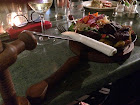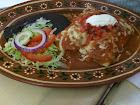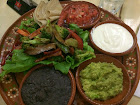Week 30: The hills are alive.....
It is a comfortable overnight flight from South-Africa to Austria, and when we lived in Johannesburg, we exploited this convenience. Sharing the same time line also helped, as one could get on a plane, wake up in Austria and be on the slopes within hours...... without jetlag. I have two lasing memories of Austria: the best ever chocolate cake (sachertorte) and the worst ever hangover. The former was in a coffee shop in Salzburg near Mozart's birthplace. The latter was in a mountain hut pub, after a fantastic day of skiing the glaciers in Steinplatte. We were trapped by a heavy snowstorm with a group of Swedish snowboarders and a couple of bottles of Hexengeist (a locally brewed schnapps).
The pub owner, of course, encouraged some friendly competition, promising to award a certificate to anyone who can down 10 shots of Hexengeist....while flaming! Need I say more.....
There is only one Austrian restaurant in Brisbane (within our Family-Friday-Night-Out geographical bounds). We travelled 14km to the west of the city to Sinnamon Park. At first I thought that is was a horrible spelling error, but as it turns out, Sinnamon park has nothing to do with the aromatic spice, but is named after the Sinnamon family. John Sinnamon, a Northern Ireland farmer of Huguenot origin, his wife Margaret and their 5 children arrived in Queensland from Tasmania in 1863. Sinnamon Farm was established on the south-western reaches of the Brisbane river, producing maize, potatoes, pineapples and dairy (later on farming cattle and horses). In 1870, they built the farmhouse Beechwood, a school and a church (all heritage listed today). In 1960 part of the farm was sold off to develop the residential suburbs of Sinnamon Park and Jindalee. The little school they built in 1875 was still in use until Jindalee State School opened in 1966. The history of this family and their involvement in the region is fascinating, but back to Austria.....
Austrians started to arrive on our shores during the 1850's gold rush era. The aftermath of WWI saw the settlement of hundreds of Austro-Hungarians, and after WWII many Austrian Jews created a new life in Australia. Today 42,341 residents have Austrian ancestry. Wolfgang Kasper is one of them. K and K Austrian Cafe and Restaurant is the shopfront to Wolfgang's Private Chef and (white glove) Butler Service. Dinner is only served on Friday and Saturday nights. During the week one can sit on the shady verandah and indulge in the huge selection of Austrian cakes and pastries. It is the refined sweet tooth of the Austrians that sets their cuisine apart from their German neighbour: Sachertorte, Apfelstrudel, Kipferl, Kashingskrapfen, Topfenknodel and Zwetschkenfleck.... the Konditorei offers a combination of nostalgia, tradition and quality.
The peaceful suburban quiet was a welcome change to the inner-city bustle we encountered the last couple of weeks. We ordered some Austrian beer, a bottle of Lens Moser Prestige Pinot Gris and a couple of Almdudlers.
After spotting the Kaiserschmarren mit Zwetschgenroster dessert on the menu, we decided to skip entrée, go straight to the main, and conclude the evening with this classic signature dessert. Mahlzeit!
The menu is quintessentially Viennese: speciality schnitzels, gerostete Leber, Breuschel, Leberkase, Krautfleish, Goulash, Geselchtes, Rindsroulade and a variety of Grostel. The portions were generous and very tasty. Austrian cuisine is influenced by its history and its neighbours, with that of Hungary and Germany particularly noticeable. Pickling of vegetables and preservation of meats feature prominently, and veal is the favoured protein.
While we enjoyed the gemutlichheit of our surrounds, the conversation turned to fact-sharing (see blog week 1 re FNO rules), with Phil keen to slip in some Freudian facts (Freud was convinced that a morphine addiction could be cured with cocaine....he eventually committed suicide), Keith elaborated on the Vienna Boys Choir, Boetie is always handy with facts on the flag (second oldest in the word), and national animal (the Black Eagle), Martina and Nielen Googled the same facts and engaged in some fact-expansion on obesity numbers, we touched on the Viennese Waltz, Mozart and The Sound of Music. First-timer Kerry was fact-free (we'll forgive her this time). Whether your musical taste is whiskers on kittens or Requiem in D minor, common-ground will be found around a plate of Austrian dessert.
Next week we'll trade the Hexengeist for some Ouzo....see you in Greece.
















